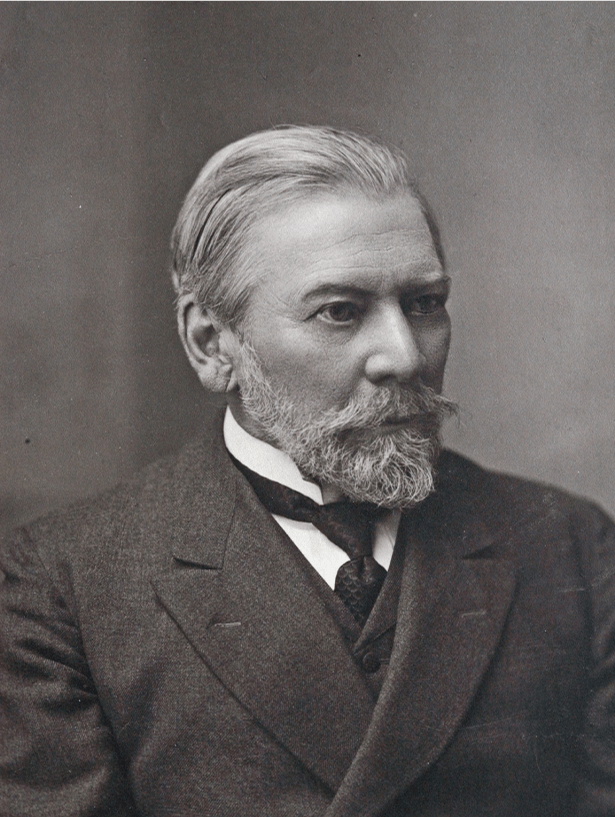Bohdan and Varvara Khanenko

Bohdan Khanenko (1849-1917) was a prominent Ukrainian collector of art and antiquities, patron of the arts, philanthropist, and founder of the first public museums in Kyiv. A descendant of an ancient Ukrainian family, Bohdan Khanenko was born on 23 January 1849 in the village of Lotoky in the Chernihiv region into the family of a nobleman Ivan Khanenko. He received his education in Moscow, first at a gymnasium and then at the law faculty of Moscow University. He worked in St. Petersburg and then in Warsaw. While still in St. Petersburg, Khanenko became fascinated with classical art. His dream was to have his own art collection. In 1874, Bohdan Khanenko married Varvara Tereshchenko. The newlyweds’ honeymoon trip to Italy marked the beginning of the Khanenko Collection and Museum. It was then that the Khanenkos acquired the first art pieces for their joint collection.
In the late 1880s, the Khanenko family settled in Kyiv. Their exquisite mansion on Oleksiivska Street (now Tereshchenkivska Street) became a landmark of the city’s architecture. Bohdan became actively involved in the cultural and social life of the city. Sugar business, finance, state lawmaking, charity, public education, art history. From 1896, he managed the affairs of the Tereshchenko Brothers’ Beet Sugar and Refined Sugar Factory Association and headed the Committee for the Creation of the First City Museum. Khanenko successfully implemented the project to construct the museum building (official name: Kyiv Art, Industrial and Scientific Museum named after Emperor Nikolai Alexandrovich, now located at 6 Hrushevskyi Street, which houses the National Art Museum of Ukraine).
Khanenko donated a significant part of his archaeological collection to the first museum. “The museum should not only be a collection of rarities and specimens, but also a school, a temple, and a sacred place where everyone must come together to study and worship beauty – so that later, in life, they may love and honour beauty,” said Bohdan Khanenko, expressing the mission of the first museum during its consecration in 1904. A passionate lover of history and art, Khanenko enthusiastically studied archaeological and antique artefacts and works of art, compiling and publishing catalogues of the collection. He and Varvara travelled extensively throughout Europe, hunting for rare works of European, Asian, Islamic and ancient art. Shortly before his death in the spring of 1917, Khanenko made a will in which he instructed his wife to prepare and transfer part of his collection to the city community, and also recommended adding her part of the collection to it and organising a museum of world art in their home.
To support the future museum, Khanenko left a significant resource: income from renting apartments in a large residential building nearby (13 Tereshchenkivska Street). “The creations of geniuses, by their very nature, cannot belong only to those who own them. A work of art is an asset that belongs to everyone… That is why the gifts of museum owners should be seen only as a generous return of what is rightfully theirs.” (Bohdan Khanenko, speech on the occasion of the opening of the First City Museum, 1904) Bohdan Khanenko died in May 1917. After his death, Varvara Khanenko completed the initiative of creating the museum.

Varvara Khanenko (1852 – 1922) (née Tereshchenko) was born on 9 August 1852 in Hlukhiv. She was the eldest daughter of Nikola Tereshchenko, the wealthiest Ukrainian entrepreneur and most generous philanthropist. Varvara inherited her compassion, her desire to care for and support others, and her interest in art from her parents. She passionately shared her dream of having her own art collection with her husband, Bohdan Khanenko.
According to the recollections of her contemporaries, Varvara Khanenko was an independent collector who was fascinated by old Italian paintings, majolica, ancient Ukrainian icons, and folk art. ‘I have a burning passion for collecting and it is terribly sad to miss out on a beautiful thing!’ Varvara confessed in one of her letters. After settling with her husband in Kyiv in the late 1880s, Varvara Nikolivna became an active member of the Kyiv cultural community. She actively supported the preparation of the first City Museum. At the turn of the 19th and 20th centuries, together with Olena Pchilka, Mykola Bilyashivskyi, Danylo Shcherbakivskyi, Nataliia Yashvil, Kost Moschenko and other cultural figures, she initiated the Ukrainian handicraft movement, designed to breathe new life into the traditions of folk art. Varvara actively implemented social changes in the Khanenko family estates in the Kyiv and Podillia regions. She founded and supported schools, craft and art workshops, hospitals, orphanages, and folk theatres at her own expense.
When her husband, Bohdan Khanenko, died in May 1917, Varvara was 64 years old. The priceless collection, the basis of the future museum, remained under her sole care. Considering the risks of the socio-political situation, in December 1918 Varvara Khanenko issued a ‘deed of gift’ to the Ukrainian Academy of Sciences with a request to take over the art collection, library and the house itself.
However, things turned out differently: in 1919, the Bolshevik authorities nationalised the Khanenko collection. Varvara then invited art historian Georgii Lukomskyi, and together they planned and created the first museum exhibition in the Khanenko Mansion. Despite the danger of the Russian-Ukrainian war and numerous changes in political regimes, Varvara rejected all offers to leave Kyiv and take the collection abroad. ‘She did not want to leave Kyiv and the museum, which was dearer to her than life itself,’ art historian Serhii Hiliarov later wrote about this decision. The collector, patron, and founder of the Khanenko Museum died in May 1922. She was buried next to her husband in the cemetery of the Vydubychi Monastery.